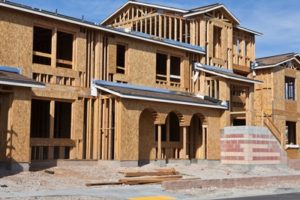The Realities of Building a Home During Winter
 Building a home during winter may seem counterintuitive. Dealing with sub-freezing temperatures, in addition to snow and ice can wreak havoc on a home construction project. While building a home during winter may be challenging, there are several myths to be cleared up.
Building a home during winter may seem counterintuitive. Dealing with sub-freezing temperatures, in addition to snow and ice can wreak havoc on a home construction project. While building a home during winter may be challenging, there are several myths to be cleared up.
It is widely believed that concrete poured in the winter contains additives that make it weaker than when poured during the summer. While calcium chloride is added to concrete mix to accelerate the curing process in cold weather conditions, the reality is that there is no major difference in strength when both are fully cured. Concrete walls with additives in the mixture meet building code requirements. While there are low temperature limits that make pouring concrete unrealistic, protecting newly poured concrete with blankets or straw may help. However, it may be best to wait until the cold front has passed before pouring concrete.
Cold weather is often seen as a hindrance to exposed lumber in the framing stage. However, the lumber industry has developed (and continue to develop) procedures that are employed in the milling process that reduce the effects of winter weather. Framing lumber is kiln dried at 19% moisture content. This is also the case during the summer when humidity becomes a moisture factor.
Crews are happy and willing to work on home construction projects, even during the winter. Workers face challenges throughout the year, and many see winter as a normal part of their building schedule that simply involves different elements. In the summer, they are challenged with sweltering heat and humidity and in the winter they are faced with numbing cold and high winds. Just as some workers prefer working in the summer, there are others that actually prefer to work in the winter. Crew managers and homeowners may also address extreme temperatures during winter by using a forced air oil-fired heater.
Homes built in the winter are not necessarily priced higher than homes built in the summer. While there will be additional expenses to account for getting the project completed in the winter, it is a relatively small figure when compared to the overall cost of the project. Additionally, homebuilders should take the price of materials and labor into account – which are usually higher in early spring. These price increases can easily exceed the additional expenses related to cold weather construction.